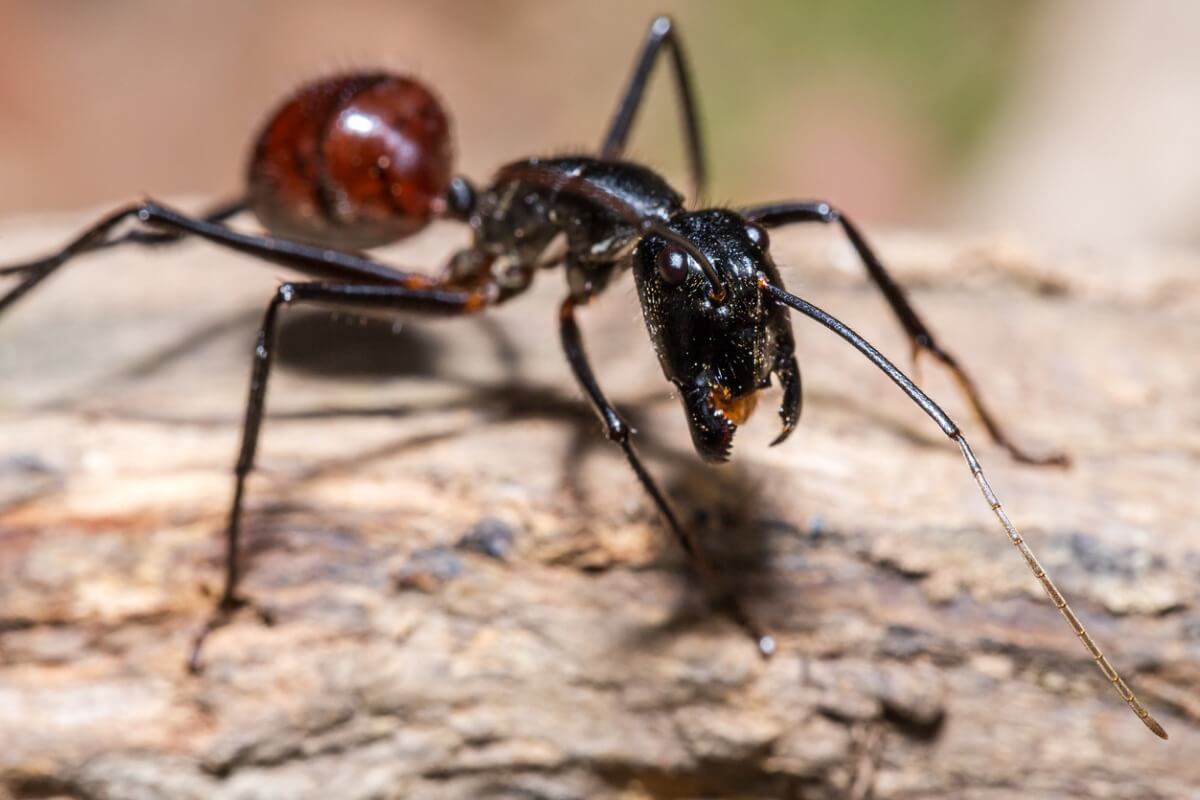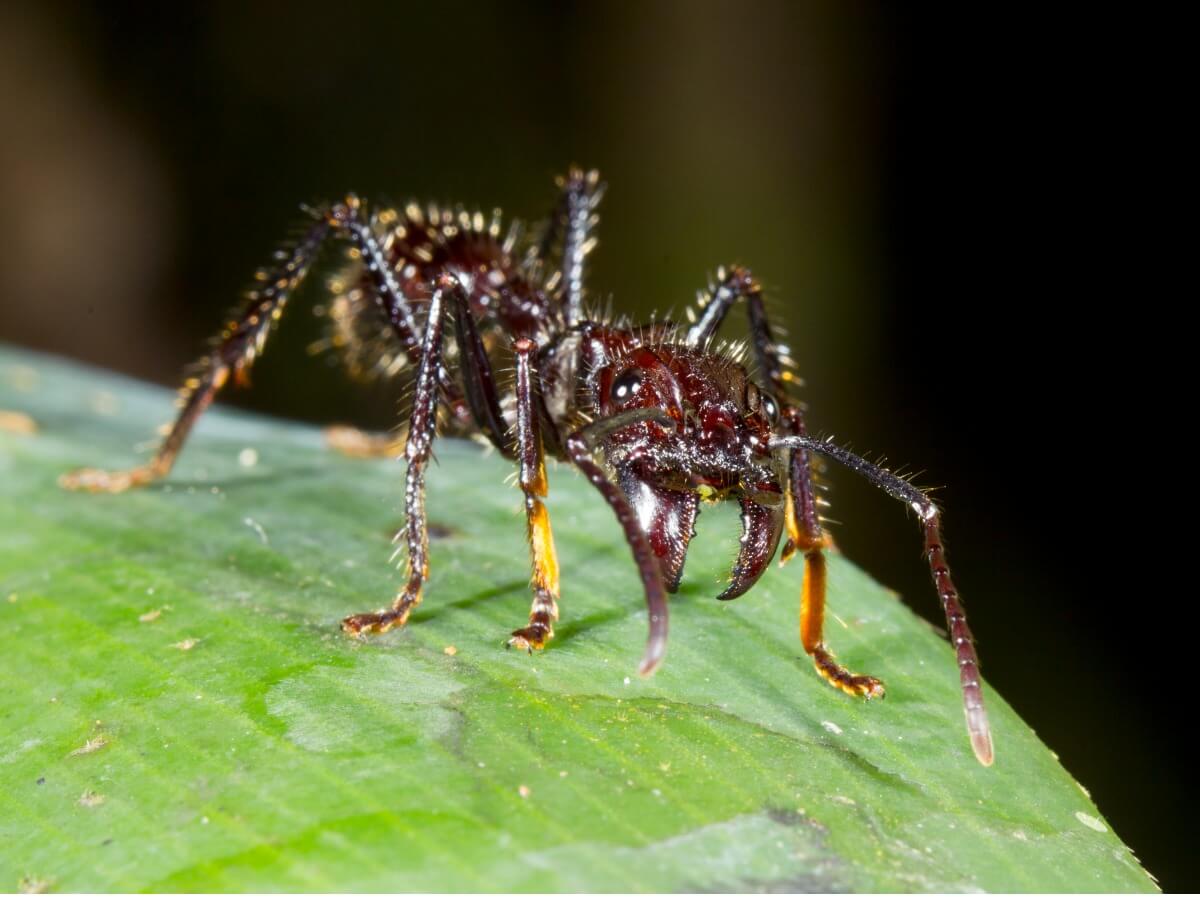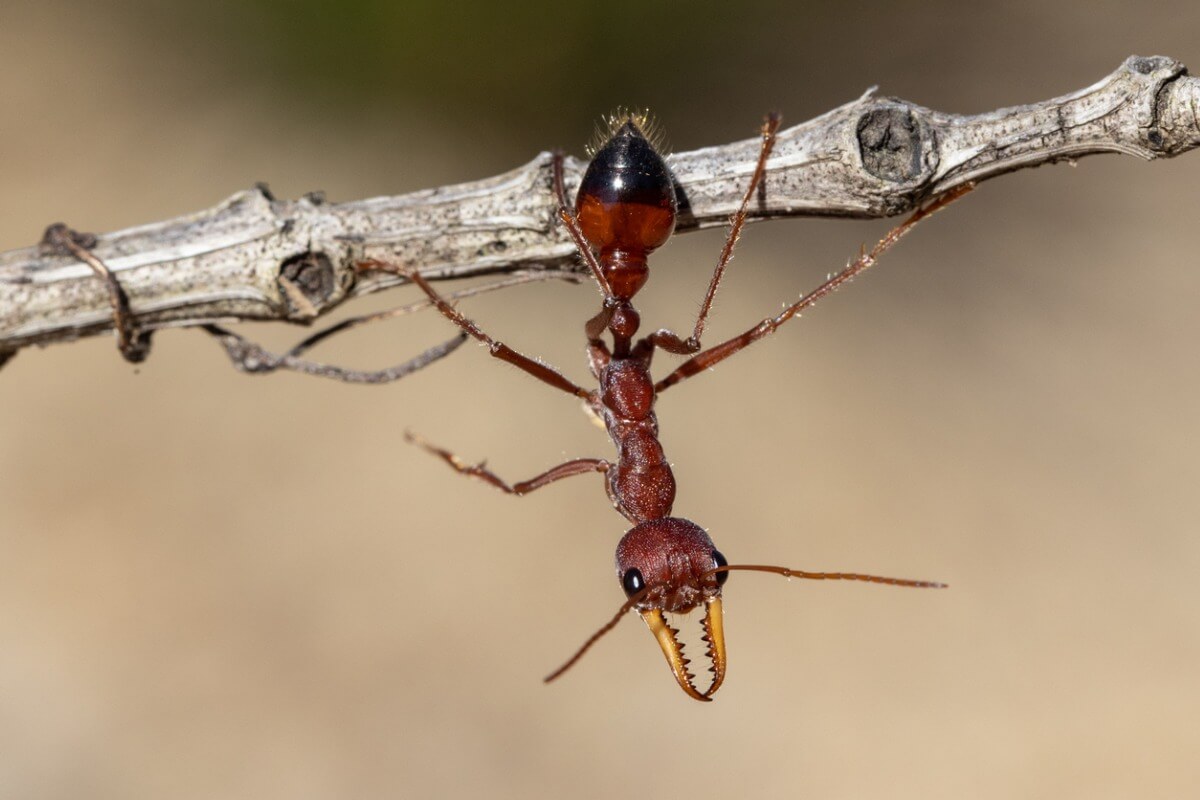What's the Largest Ant in the World?

Ants are a group of insects that are well known throughout the world, as their distribution spans almost every continent. These small arthropods are usually only a few millimeters in length, and are usually not visually significant. However, we’ve got some of the largest ants in the world to surprise you today! Find out how big the largest ant is!
These insects belong to the group of Formicidae, which are close relatives of bees and wasps (they’re part of the order Hymenoptera). As if that weren’t enough, some species have poisonous stings that are capable of inflicting quite a lot of damage with their toxins. Read on and find out which is the largest ant in the world.
Defining ants…
Ants are a group of arthropods whose bodies are divided into 3 regions: head, thorax and abdomen. Each section is very well defined, so it’s easy to identify them at a glance. In addition, they exhibit the typical “wasp waist”, which represents a “bridge” between the last 2 sections of the body, distinctive of Hymenoptera.
Like most insects, ants have three pairs of legs that allow them to move easily. In addition, they exhibit a pair of receptive antennae that guide them in their habitat and sense their environment. Finally, the abdomen usually contains a stinger to inject toxic components that paralyze and hurt their victims.
As if that weren’t enough, these organisms have powerful jaws, and so their stinger isn’t the only means of defense against predators. These jaws are essential, because, thanks to them, they can transport objects or cut them. In this way, their mouthparts are a very useful tool for their survival.
In general, the vast majority of species are quite small and are no more than two centimeters in length (although queens are usually larger than workers). However, some types of ants far exceed these dimensions and their appearance is usually gigantic compared to the others.
Largest ants in the world
Although it sounds like a simple task, defining which ant is the largest in the world isn’t an easy job, because there are several species that can fight for that position. In addition, although some species have large average sizes, not all reach the maximum sizes. Anyway, here are some examples that will surprise you.
Giant forest ant (Dinomyrmex gigas)
This particular species can measure between 2 and 3 centimeters (0.8 to 1.2 inches) in length, which makes it one of the largest formicidae in Southeast Asia. Despite this, they’re quite peaceful insects that only attack if provoked. Their bite poses no danger to human health beyond a minor injury, so there’s nothing to worry about.

Bullet ant (Paraponera clavata)
The bullet ant was considered the world’s largest formacid until not so long ago, as the queen can easily reach 3.5 centimeters (nearly an inch and a half) in length. However, nowadays there’s another species that beats it by a few millimeters. These insects are endemic to Central America, where they’re distributed in the tropical forests of the area.
In fact, the common name comes from its painful sting, which is thought to be the same as the impact of a bullet in terms of physical discomfort.

Bulldog ants (Myrmecia)
All species of the genus Myrmecia are called bulldog ants. This group of formicidae is known for its relentless aggressiveness and solitary behavior, and they’re in stark contrast to the social behavior of other ants. As for their size, some specimens measure between 1 and 3 centimeters in length, which places them among the largest that exist.

What’s the largest ant in the world?
Although there’s a great variety of species in the world, only one group of ants can be considered the largest of all. This award goes to the species Dinoponera gigantea, which is found in South America and reaches 4 centimeters (1.6 inches) in length. Because of these characteristics, it’s also known as the giant ant of the Amazon.
These hymenopterans share several traits with bullet ants, including their powerful sting. According to an article in the scientific journal Annals of the Entomological Society of America, both species have a similar venomous apparatus. This means that, apart from being incredibly large, they also have one of the most painful stings among the formicidae.
An arthropod that’s only a few centimeters long may not seem too dangerous. However, you have to take into account that hundreds of ants often attack the same target at the same time and can cause real damage. Even so, most species attack only when they feel threatened, so it’s easy to avoid being bitten. Respect them and they will respect you back.
All cited sources were thoroughly reviewed by our team to ensure their quality, reliability, currency, and validity. The bibliography of this article was considered reliable and of academic or scientific accuracy.
- Pfeiffer, M., & Linsenmair, K. E. (2007). Trophobiotic interactions of giant ants Camponotus gigas (Hym. Form.) and wax cicada Bythopsyrna circulata (Hom. Flatidae) on a Syzygium-tree (Myrtaceae) in a tropical rainforest on Borneo. Asian Myrmecology, 1, 105-119.
- Shafiq, H. M., & Maryati, M. (2021, April). Dinomyrmex gigas (Latreille, 1802): A Potential Icon for Taman Negara Johor Endau Rompin. In IOP Conference Series: Earth and Environmental Science (Vol. 736, No. 1, p. 012044). IOP Publishing.
- Fourcassié, V., & Oliveira, P. S. (2002). Foraging ecology of the giant Amazonian ant Dinoponera gigantea (Hymenoptera, Formicidae, Ponerinae): activity schedule, diet and spatial foraging patterns. Journal of Natural History, 36(18), 2211-2227.
- Lenhart, P., Dash, S. T., & Mackay, W. P. (2013). A revision of the giant Amazonian ants of the genus Dinoponera (Hymenoptera, Formicidae). Journal of Hymenoptera Research, 31, 119.
- Hanley, R. S., & Lovett, J. P. (1999). Behavior and subcaste specialization among workers of the giant tropical ant, Paraponera clavata (Hymenoptera: Formicidae: Ponerinae). Entomological contributions in memory of Byron A. Alexander., 45-50.
- Street, M. D., Donovan, G. R., Baldo, B. A., & Sutherland, S. (1994). Immediate allergic reactions to Myrmecia ant stings: immunochemical analysis of Myrmecia venoms. Clinical & Experimental Allergy, 24(6), 590-597.
- Hermann, H. R., Blum, M. S., Wheeler, J. W., Overal, W. L., Schmidt, J. O., & Chao, J. T. (1984). Comparative anatomy and chemistry of the venom apparatus and mandibular glands in Dinoponera grandis (Guerin) and Paraponera clavata (F.)(Hymenoptera: Formicidae: Ponerinae). Annals of the Entomological Society of America, 77(3), 272-279.
This text is provided for informational purposes only and does not replace consultation with a professional. If in doubt, consult your specialist.